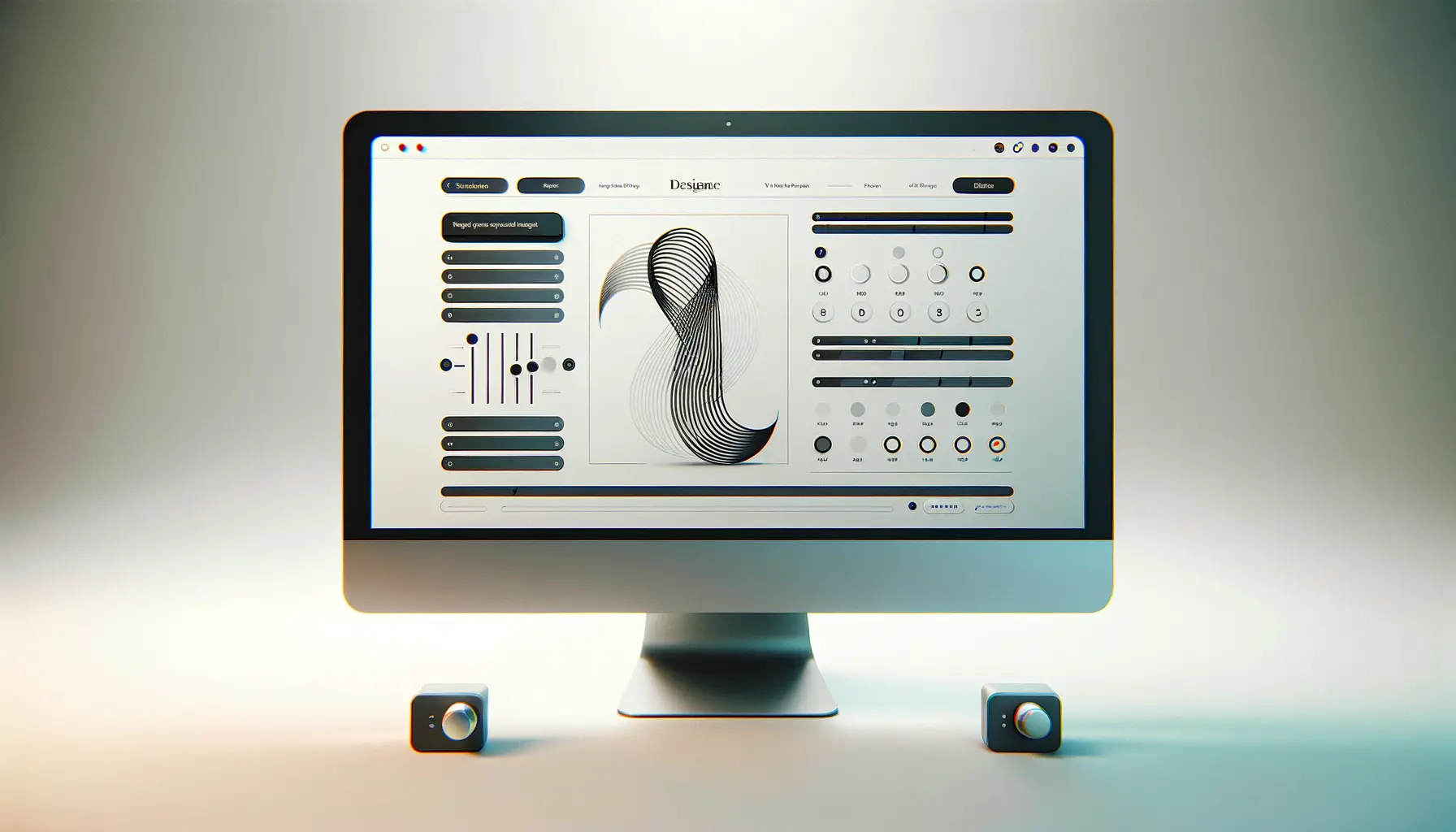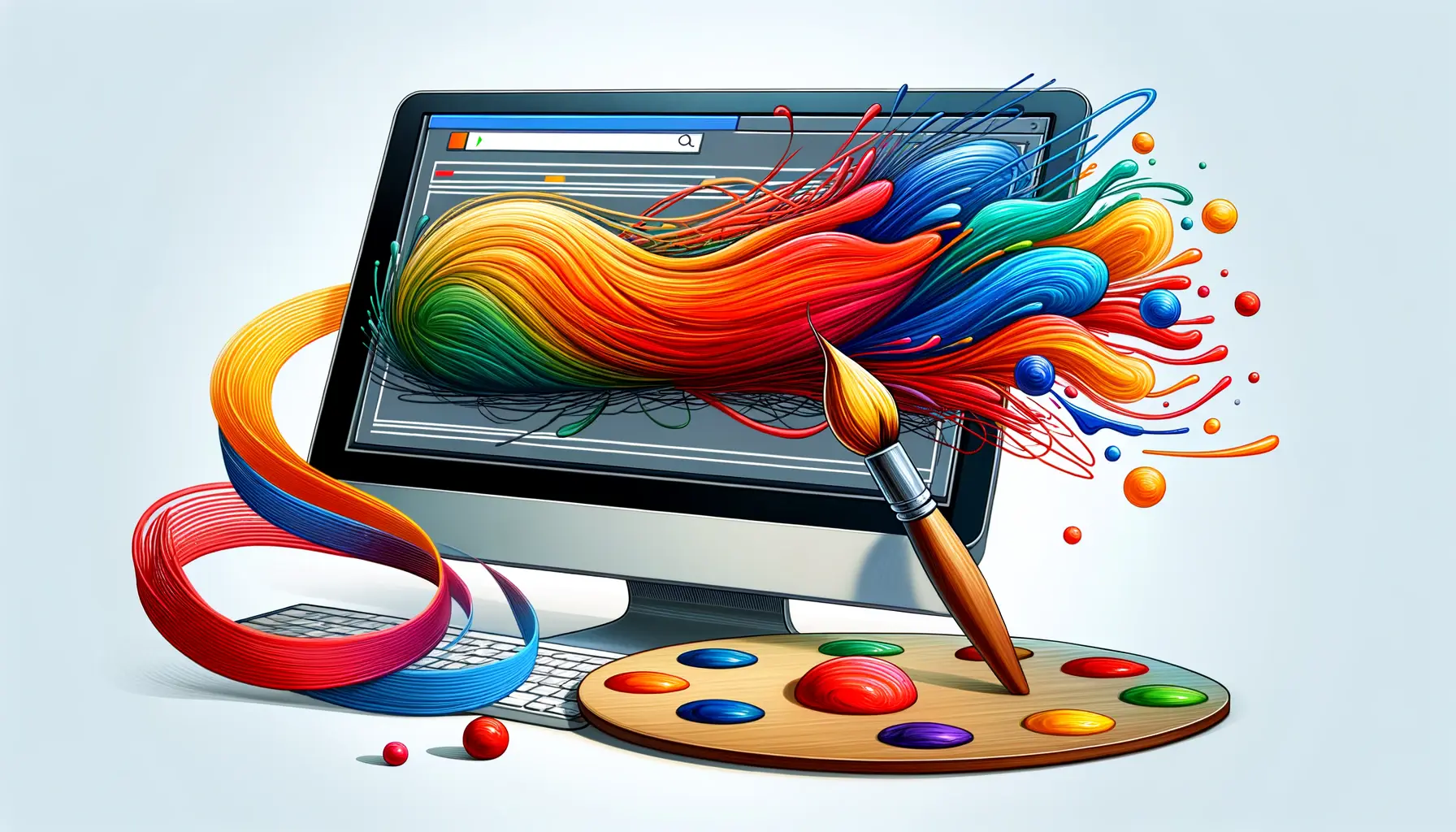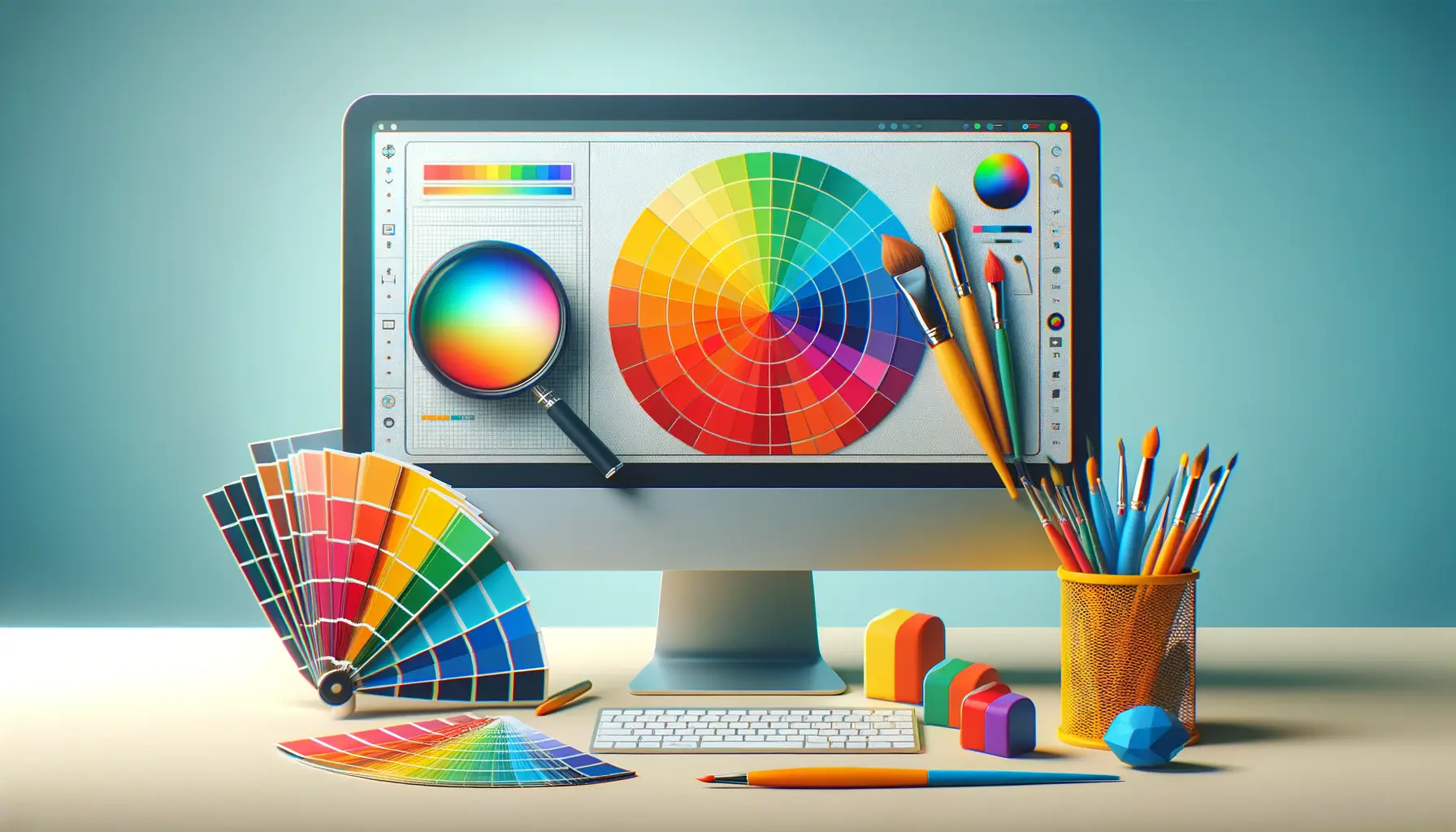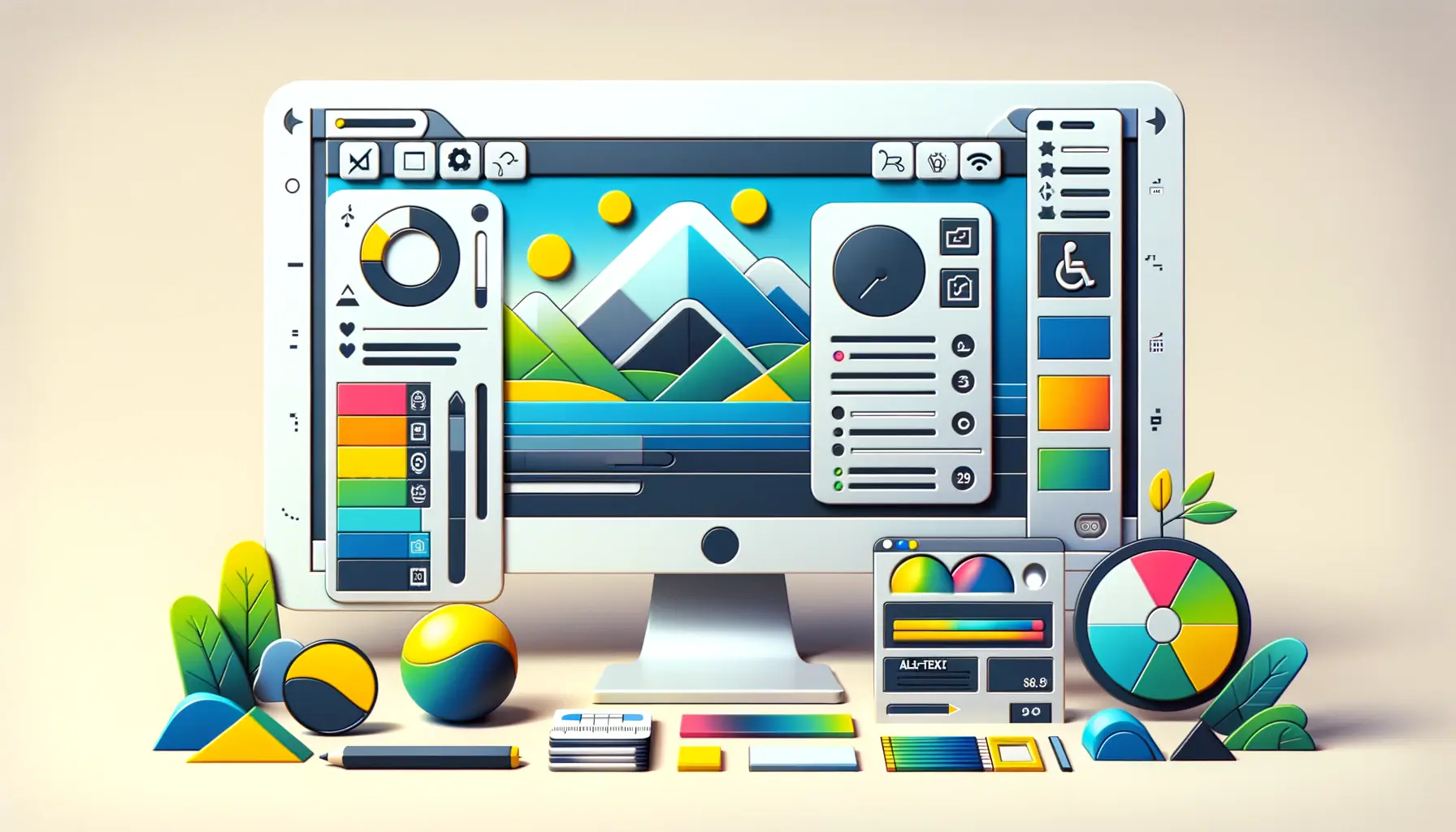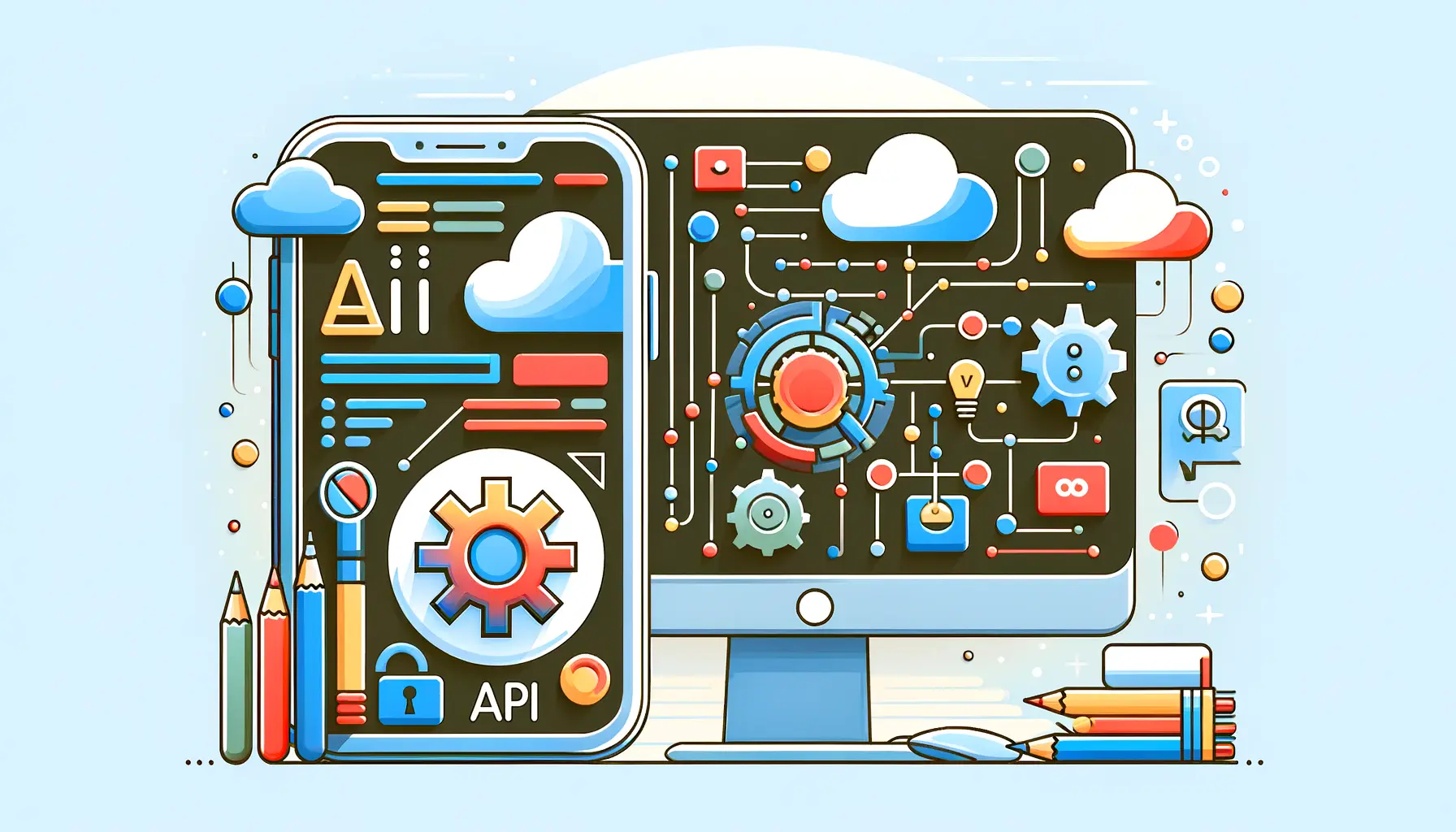The digital landscape is continuously evolving, with web design at the forefront of showcasing creativity and innovation.
Among the plethora of tools and technologies available to web designers, the Canvas API stands out as a powerful ally.
This JavaScript API, when combined with the HTML “ element, unlocks a world of possibilities for creating and manipulating advanced graphics directly in the browser.
It’s not just about drawing; it’s about bringing interactivity and visual storytelling to the next level in web design.
Understanding the Canvas API is essential for developers and designers aiming to push the boundaries of what’s possible on the web.
Unlike traditional image use, which is static and limited, Canvas offers a dynamic canvas where graphics can be generated, animated, and interacted with in real-time.
This capability opens up a new realm of user engagement, allowing for the creation of rich, immersive web experiences that were previously only possible with complex plugins or external applications.
- Introduction to Canvas API
- Core Features of the Canvas API
- Integrating Canvas API with Web Design
- Challenges and Solutions in Using Canvas API
- Advanced Techniques and Tips for Canvas API
- Future Trends in Canvas API and Web Graphics
- Strategies for Learning and Mastering Canvas API
- Empowering Web Design with the Canvas API
- Canvas API FAQs for Web Designers
Introduction to Canvas API
The Canvas API, part of the HTML5 specification, is a robust tool for web developers and designers.
It provides a means to draw graphics via scripting in JavaScript, ranging from simple lines and shapes to complex interactive animations.
What sets Canvas apart is its direct rendering into the browser, offering unparalleled speed and flexibility for graphic content.
At its core, the Canvas API facilitates pixel manipulation for both 2D and 3D graphics, making it a versatile choice for a wide array of web projects.
From game development to data visualization and interactive art, Canvas enables creators to implement detailed graphics without the need for external software or plugins.
Its accessibility and ease of use have made it a staple in the toolkit of modern web developers.
Why Choose Canvas?
Choosing the Canvas API for web projects comes with a multitude of benefits.
Firstly, it allows for real-time graphics rendering, which is crucial for applications requiring dynamic visual content.
Secondly, it supports a wide range of graphic designs, from simple drawings to complex animations, providing developers with the tools to bring their creative visions to life.
Moreover, Canvas is highly interactive.
Users can interact with the graphics through clicks, drags, and other input methods, making it ideal for creating engaging user experiences.
Whether it’s for educational tools, interactive infographics, or sophisticated web games, Canvas offers the functionality to make web content not just seen, but experienced.
The Canvas API’s versatility and power in rendering dynamic graphics make it an essential tool for advanced web design projects.
Core Features of the Canvas API
The Canvas API is rich with features that cater to a broad spectrum of graphic design needs.
Its core capabilities are designed to enhance the visual aspect of web applications, making it a go-to choice for developers looking to incorporate advanced graphics.
Understanding these features is key to leveraging the Canvas API effectively in web design projects.
At the heart of the Canvas API’s functionality is its ability to draw and manipulate both 2D and 3D graphics.
This flexibility is crucial for creating a diverse range of web content, from simple animations to complex interactive environments.
Drawing 2D Graphics
The Canvas API excels in creating two-dimensional graphics, offering a wide array of drawing functions.
These include:
- Shapes: Basic geometric shapes such as rectangles, circles, and lines can be easily drawn, forming the building blocks of more complex images and animations.
- Text: Adding text to the canvas is straightforward, with options to adjust font, size, alignment, and color, enabling the integration of dynamic textual content within graphics.
- Images: Canvas can render images from various sources, including files and other elements on the page, allowing for the manipulation and combination of visual assets.
- Path Drawing: Complex paths can be created and filled, offering detailed control over the graphics, from custom shapes to intricate designs.
Animating Graphics
Animation is another cornerstone of the Canvas API, enabling the creation of lively and interactive web content.
Key aspects include:
- Frame-by-Frame Control: Developers can control animations on a granular level, updating graphics frame by frame for smooth transitions and movements.
- Interactive Elements: By integrating user input, animations can become interactive, responding to clicks, hovers, and other actions for an engaging user experience.
These features underscore the Canvas API’s role in modern web design, providing the tools necessary to create visually appealing and interactive web content.
By harnessing these capabilities, developers can craft experiences that not only attract but also retain user attention.
While the Canvas API is powerful, its effectiveness depends on the creativity and technical skill of the developer. Experimentation and practice are key to mastering its potential.
Integrating Canvas API with Web Design
The integration of the Canvas API into web design projects requires a blend of technical proficiency and creative vision.
This process involves more than just understanding the API’s capabilities; it’s about strategically incorporating dynamic graphics to enhance user experience and engagement.
Effective integration can significantly elevate the aesthetic and functional aspects of a website, making it stand out in the digital space.
To seamlessly blend Canvas API graphics into web designs, developers must consider both the visual impact and the performance implications.
This balance ensures that while the website remains visually compelling, it also performs efficiently across different devices and browsers.
Best Practices for Canvas Integration
Adhering to best practices is crucial for optimizing the use of the Canvas API in web projects.
These guidelines help ensure that the graphics are not only visually appealing but also optimized for performance:
- Progressive Enhancement: Graphics should enhance the user experience without being a prerequisite for the functionality of the site, ensuring accessibility for users with varying levels of technology.
- Responsive Design: Canvas elements should be responsive, adapting to different screen sizes and orientations to maintain usability and appearance across devices.
- Performance Optimization: Efficient use of the Canvas API is essential to avoid slowing down the website. Techniques such as layering, minimizing redraw areas, and optimizing animation loops can help maintain smooth performance.
Case Studies: Successful Canvas API Implementations
Examining real-world examples can provide valuable insights into how the Canvas API can be effectively integrated into web design.
While specific case studies are not mentioned, many innovative web applications utilize Canvas for interactive data visualizations, educational tools, and immersive storytelling.
These applications demonstrate the API’s versatility and its ability to create engaging user experiences that go beyond static web content.
Through strategic integration, the Canvas API enables web designers and developers to craft rich, interactive web experiences.
By following best practices and drawing inspiration from successful implementations, professionals can leverage the Canvas API to its full potential, enhancing the visual and interactive quality of their web projects.
Exploring various integration strategies and case studies can inspire innovative uses of the Canvas API, pushing the boundaries of what’s possible in web design.
Challenges and Solutions in Using Canvas API
While the Canvas API opens up a world of possibilities for web design, its implementation is not without challenges.
These hurdles can range from performance issues to cross-browser compatibility concerns.
However, with every challenge comes a solution, and understanding these can help developers navigate the complexities of using Canvas effectively.
Addressing these challenges head-on ensures that the benefits of using Canvas—such as dynamic content creation and interactive user experiences—are not overshadowed by technical obstacles.
Performance Optimization
One of the primary challenges in using the Canvas API is managing performance, especially with complex or intensive graphics operations.
Poor performance can lead to slow load times and choppy animations, detracting from the user experience.
- Solution: Developers can optimize performance by minimizing the amount of drawing operations, using layers to cache static parts of the scene, and leveraging web workers for computationally intensive tasks. Additionally, careful management of animation loops and avoiding unnecessary canvas redraws can significantly improve performance.
Cross-Browser Compatibility
Another challenge is ensuring that Canvas API implementations work consistently across different browsers and devices.
Variations in support and performance can lead to inconsistent user experiences.
- Solution: To tackle cross-browser compatibility issues, developers should test their Canvas applications across a range of browsers and devices early and often in the development process. Utilizing polyfills and libraries can also help bridge the gap in browser support, ensuring a more uniform experience for all users.
Accessibility Concerns
Ensuring that Canvas-based content is accessible to all users, including those with disabilities, is a crucial consideration.
The inherently visual nature of Canvas graphics can pose challenges for screen readers and other assistive technologies.
- Solution: Developers can enhance accessibility by providing alternative content for Canvas elements, such as descriptive text or fallback images. Implementing keyboard navigation and focus management also improves accessibility, making interactive Canvas content usable for everyone.
Overcoming these challenges requires a thoughtful approach to design and development, prioritizing user experience and accessibility.
By addressing performance, compatibility, and accessibility issues, developers can fully harness the power of the Canvas API to create engaging and inclusive web experiences.
Effective problem-solving strategies are key to leveraging the Canvas API’s full potential while ensuring a high-quality user experience across all devices and browsers.
Advanced Techniques and Tips for Canvas API
Mastering the Canvas API involves more than understanding its basic functionalities; it requires delving into advanced techniques that can unlock its full potential.
These advanced methods enable developers to create more sophisticated, efficient, and visually stunning web graphics.
By leveraging these tips and techniques, developers can elevate their Canvas projects, pushing the boundaries of web design and user interaction.
Exploring these advanced techniques not only enhances the visual appeal of web projects but also optimizes performance and user engagement.
Here are some key areas where developers can expand their Canvas API skills.
Utilizing WebGL for 3D Graphics
While the Canvas API is renowned for its 2D drawing capabilities, integrating WebGL opens up the realm of 3D graphics.
WebGL, a JavaScript API for rendering interactive 3D and 2D graphics within any compatible web browser, works seamlessly with the “ element to bring high-performance visualizations and games to the web without the use of plugins.
- Technique: Developers can use WebGL for complex animations, realistic lighting and shadows, and intricate shapes and textures, significantly enhancing the visual experience of web applications.
Optimizing Canvas with Offscreen Rendering
Offscreen rendering is a powerful technique for improving the performance of Canvas applications, especially those with complex or numerous animations.
- Technique: By rendering graphics offscreen and then transferring them to the main canvas, developers can reduce repaint costs and improve overall performance. This approach is particularly useful for animations that involve static backgrounds or elements that do not change frequently.
Interactive Data Visualization
Data visualization is a compelling use case for the Canvas API, allowing developers to create interactive charts, graphs, and other visual representations of data.
- Technique: Leveraging the Canvas API for data visualization involves using dynamic scaling, animation, and interactivity to present complex data in an accessible and engaging way. This can include interactive infographics, real-time data charts, and more.
These advanced techniques showcase the versatility and power of the Canvas API in creating dynamic and interactive web content.
By continuously exploring and implementing these methods, developers can create more engaging, efficient, and visually appealing web applications.
Embracing advanced Canvas API techniques is crucial for developers looking to create cutting-edge web applications that captivate and engage users.
Future Trends in Canvas API and Web Graphics
The landscape of web graphics is perpetually evolving, with the Canvas API at the forefront of this transformation.
As web technologies advance, so too do the capabilities and applications of the Canvas API, shaping future trends in web design and development.
Staying abreast of these trends is crucial for developers and designers aiming to create innovative and engaging web experiences.
Anticipating the future of Canvas API involves understanding both the technological advancements and the shifting needs of web users.
These trends not only reflect the potential for more immersive and interactive web applications but also highlight the ongoing need for performance optimization and accessibility.
Increased Integration of AI and Machine Learning
One significant trend is the integration of artificial intelligence (AI) and machine learning (ML) with web graphics, including those created with the Canvas API.
This integration allows for more personalized and dynamic user experiences, with graphics that adapt in real-time to user interactions and data.
- Impact: AI and ML can enhance the functionality of Canvas-based applications, enabling features like predictive drawing, automated design adjustments, and interactive data visualizations that respond to user behavior.
Enhanced Performance and Efficiency
As web applications become more complex, the demand for performance optimization grows.
Future developments in the Canvas API are likely to focus on enhancing efficiency, reducing the computational load of graphics rendering, and improving the responsiveness of web applications.
- Impact: Techniques such as offscreen rendering, image compression, and more efficient animation loops will become increasingly important for developers looking to maintain smooth user experiences in graphics-intensive applications.
Greater Focus on Accessibility and Inclusivity
Accessibility remains a critical consideration in web design, and future trends in the Canvas API will likely emphasize making web graphics more accessible to all users, including those with disabilities.
This includes improving screen reader support, keyboard navigation, and alternative text for complex graphics.
- Impact: By prioritizing accessibility, developers can ensure that Canvas-based content is inclusive, reaching a wider audience and providing a better user experience for everyone.
Understanding these trends and preparing for their impact is essential for developers and designers looking to leverage the Canvas API in their future projects.
By staying informed and adaptable, professionals can continue to create web applications that are not only visually stunning but also efficient, accessible, and ahead of the curve.
Ignoring the evolving trends in web graphics and the Canvas API can leave developers behind, missing out on opportunities to innovate and engage users in new ways.
Strategies for Learning and Mastering Canvas API
Embarking on the journey to learn and master the Canvas API is a commitment to enhancing one’s web development skills, particularly in the realm of graphics.
The Canvas API, with its vast capabilities for creating dynamic and interactive web content, offers a rich area of exploration for developers and designers alike.
However, the path to mastery requires a strategic approach, combining structured learning with hands-on practice.
Developing a deep understanding of the Canvas API not only enables the creation of sophisticated web graphics but also opens up new avenues for creativity and innovation in web design.
Here are strategies to effectively learn and master the Canvas API.
Start with the Basics
Foundational knowledge is crucial for any learning endeavor, and the Canvas API is no exception.
Begin by understanding the core concepts, such as the “ element, drawing shapes, adding text, and basic animations.
Resources like official documentation, tutorials, and online courses can provide a solid starting point.
- Approach: Focus on building a strong foundation with clear understanding of basic concepts before moving on to more complex topics.
Practice Through Projects
Hands-on practice is essential for reinforcing learning and developing practical skills.
Engage in small projects that challenge you to apply what you’ve learned, gradually increasing complexity as you become more comfortable with the API.
- Approach: Start with simple projects like creating basic animations or drawing shapes, and progressively tackle more complex applications such as interactive games or data visualizations.
Leverage Community Knowledge
The web development community is a valuable resource for learning and problem-solving.
Participating in forums, attending workshops, and contributing to open-source projects can provide insights and feedback that accelerate the learning process.
- Approach: Engage with the community by asking questions, sharing your projects, and learning from the experiences of others.
Stay Updated with Trends
The web development field is constantly evolving, and staying informed about the latest trends and updates in the Canvas API and web graphics is important.
This ensures that your skills remain relevant and that you’re aware of new features and best practices.
- Approach: Follow industry blogs, attend conferences, and participate in online communities focused on web development and graphic design.
By adopting these strategies, aspiring developers can navigate the complexities of the Canvas API and harness its full potential in their web projects.
The journey from novice to expert may be challenging, but the rewards of mastering this powerful tool for web graphics are immense, offering endless opportunities for creativity and innovation in web design.
Continuous learning and practice are key to mastering the Canvas API, unlocking the ability to create advanced and interactive web graphics that enhance user experiences.
Empowering Web Design with the Canvas API
The journey through the capabilities, challenges, and advanced techniques of the Canvas API underscores its pivotal role in modern web design.
This powerful tool has transformed the way developers and designers approach graphics, enabling the creation of dynamic, interactive, and visually compelling web experiences.
As we’ve explored, the Canvas API is not just a feature of web development; it’s a catalyst for innovation, pushing the boundaries of what’s possible in digital design.
The Path to Mastery
Mastery of the Canvas API opens up a world of possibilities for web professionals.
It requires a blend of technical skill, creative vision, and continuous learning.
The strategies for learning and mastering the Canvas API, from starting with the basics to engaging with the community, highlight the importance of a structured approach to professional development.
As the web continues to evolve, so too will the tools and techniques at our disposal, making lifelong learning an essential part of a web developer’s journey.
Looking Ahead: The Future of Canvas API
The future of the Canvas API is bright, with emerging trends pointing towards more immersive web experiences, enhanced performance, and greater accessibility.
The integration of AI and machine learning, in particular, offers exciting prospects for personalized and dynamic web content.
As developers and designers, staying ahead of these trends will be crucial for leveraging the Canvas API to its full potential, ensuring that we continue to create web experiences that are not only visually stunning but also inclusive and engaging for all users.
- The role of the Canvas API in creating advanced graphics for web design cannot be overstated. Its impact on user engagement and experience is profound, offering a canvas (pun intended) for creativity and innovation.
- Challenges such as performance optimization and cross-browser compatibility are surmountable with the right strategies, ensuring that the benefits of using the Canvas API far outweigh the hurdles.
- Advanced techniques, including the use of WebGL for 3D graphics and offscreen rendering, highlight the API’s versatility and the depth of possibilities it offers for web development.
In conclusion, the Canvas API is a cornerstone of modern web design, enabling the creation of rich, interactive, and accessible web content.
Its continued evolution and integration into web projects will undoubtedly shape the future of digital experiences.
For developers and designers willing to explore its depths and embrace the challenges, the Canvas API offers a pathway to creating groundbreaking web applications that captivate and engage users across the globe.
Quality web design is key for a great website! Check out our service page to partner with an expert web design agency.
Canvas API FAQs for Web Designers
Explore commonly asked questions about utilizing the Canvas API in web design, offering insights for both beginners and experienced developers.
Yes, the Canvas API is accessible to all users, with full specifications published for developers to interact with and integrate into their projects.
The Canvas API is a powerful tool for drawing graphics via JavaScript and HTML, enabling dynamic content creation in web design.
Begin by exploring the official documentation, which provides comprehensive guides and examples to help you get up and running.
It’s used for creating and manipulating graphics, animations, and interactive content directly in the browser for dynamic web experiences.
Yes, with a range of resources available, beginners can gradually learn to utilize its features for web design projects.
While primarily for 2D graphics, the Canvas API can be combined with WebGL for creating interactive 3D web graphics.
It allows for the creation of rich, interactive user experiences with dynamic graphics and animations, elevating the visual quality of websites.
Yes, optimizing performance is key, especially for complex graphics, by minimizing redraws and leveraging efficient animation techniques.

